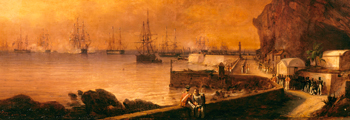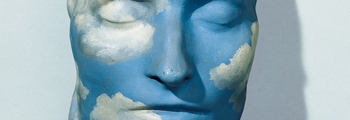1. The final victory
On 27 May, 1821, the Bertrand family, Montholon, Dr Antommarchi, Abbé Vignali, and the servants Marchand, Ali, Coursot, and Archambault embarked for Europe. They left in their wake Longwood and the British and Chinese furniture, which the island notables shared out between them. The very same who in 1815 had provided Napoleon with the furniture they no longer wanted.Though the last of his faithful companions were forced to leave the Emperor’s body behind them, they nevertheless took with them the manuscripts of his Memoirs, his will, his death mask, and dozens of objects marked by his presence, not to mention their own remembrances.
The final phase of the battle took place far from St Helena, though the island was to remain central to the argument. Later, these witnesses of the exile proclaimed tirelessly far and wide not only the history of his reign as Napoleon himself had written it, but also the tribulations of the final years. In this way, by attempting to complete the story, they in the end changed quite considerably the way contemporaries and future generations would remember Napoleon I.
2. Leaving St Helena
Even beyond the grave, Napoleon continued to have an influence on political life. Some wished his name to be erased from history; others wanted to honour him. In 1840, King Louis-Philippe I attempted a gesture of national unity. With British agreement, he sent his son, the Prince de Joinville, to St Helena, to bring back the illustrious corpse. After some hesitation, the Hôtel des Invalides was chosen as the final resting place.The members of the expedition were for the most part those who had shared Napoleon’s exile: Bertrand and his son, Arthur, Gourgaud, Las Cases’ son, Marchand, and Ali, to name but the best known. On 15 October, 1840, in driving rain, the tomb and then the four coffins were opened. The body appeared perfectly preserved. It was an intensely emotional experience. The parts of the teak coffin were handed out to those present. A new lead coffin was used in its place, and this was nested in an ebony sarcophagus.
On their arrival at Cherbourg, the mortal remains were borne up the river Seine. Paris received them on 10 December. The sarcophagus was initially displayed in a chapel in the Dôme des Invalides until it was transferred to the monumental crypt in 1861.
3. The rock of destiny
In July 1821, Europe learned of the death of Napoleon on St Helena. Though unconfirmed, the news of his death in the bosom of the church moved his critics. Amongst them, the poet Alphonse de Lamartine concluded: “ His coffin is sealed! God has judged him! Silence!”.At Longwood”, the Emperor staged his demise carefully, even going so far as to explain to the Comte de Montholon: “If Jesus Christ has not died on the cross, he would not have been God.” After his death, eyewitness accounts completed this metamorphosis. Locks of hair, leaves from the willows over the tomb, and the mementos that his faithful attendants distributed became relics of a new cult. Death in exile on an island was compared to hell; Napoleon came back transfigured.
“You tower over our epoch. Angel or demon? Of no importance!” said Victor Hugo of Napoleon. For the children of this century that followed the Enlightenment, Napoleon became a hero of mythology. St Helena at this point became the rock on which Prometheus, the Titan, was chained and eternally tortured by the eagle of Zeus for having brought fire to mankind. The real shape of island disappeared behind the symbol.

